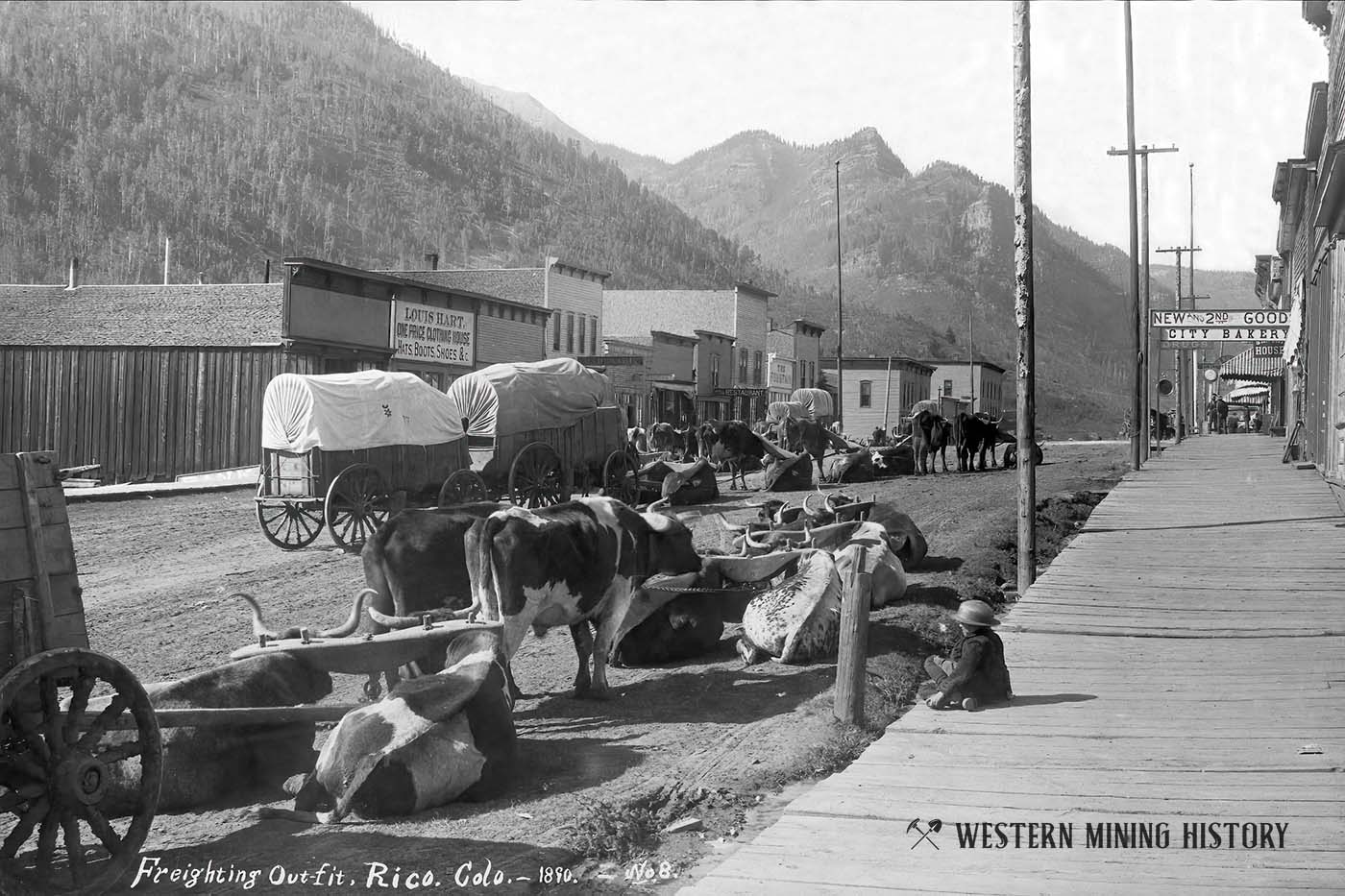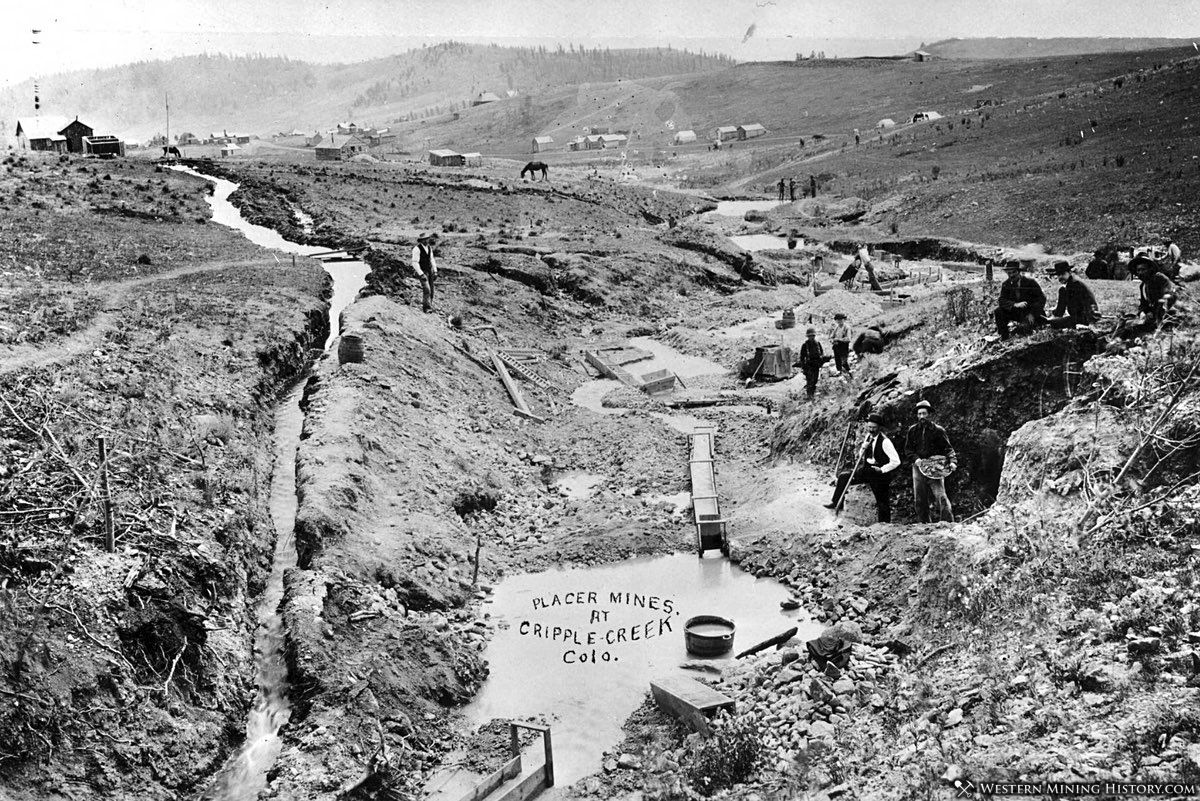Rico History
In 1833, Antoine Robidoux and a group of trappers searched for beaver along the upper Dolores River. While here, they discovered evidence that Spanish Prospectors had previously processed precious metals in the area. The trappers, however, moved on when they did not find any substantial deposits of gold or silver.
In the mid-1860s, prospectors returned to the San Juan Mountains and actively staked claims in the mountains above what is now Rico. For the next thirty years, access to the Pioneer Mining District was extremely difficult as the land to the south was controlled by the Ute Indians. In the 1880s, mining supplies, freight and settlers came over the mountains from the nearest railroad station in Rockwood - north of Durango, via the Scotch Creek Toll Road.
In 1891, the Rio Grande Southern Railroad arrived in Rico in a route that connected Durango with Ridgway. By 1892, Rico had a population of nearly 5,000 people with 23 saloons, 2 churches, 2 newspapers, a bank, a theater, a boarding house, a mercantile, a brick county courthouse, and a thriving three block red-light district.
Above text is from a historical marker in Rico
Early History
Text in the following sections provided by Ellie Frost
When Robert C. Darling first settled in Rico in the summer of 1870, residents were few and far between on the Dolores River between Ophir and Big Bend (Dolores). Darling returned to the area after working in the four corners with his brother, Capt. E. N. Darling, surveying Navajo land and boundaries in the 1860s, and set up his homestead and double log cabin on Silver Creek.
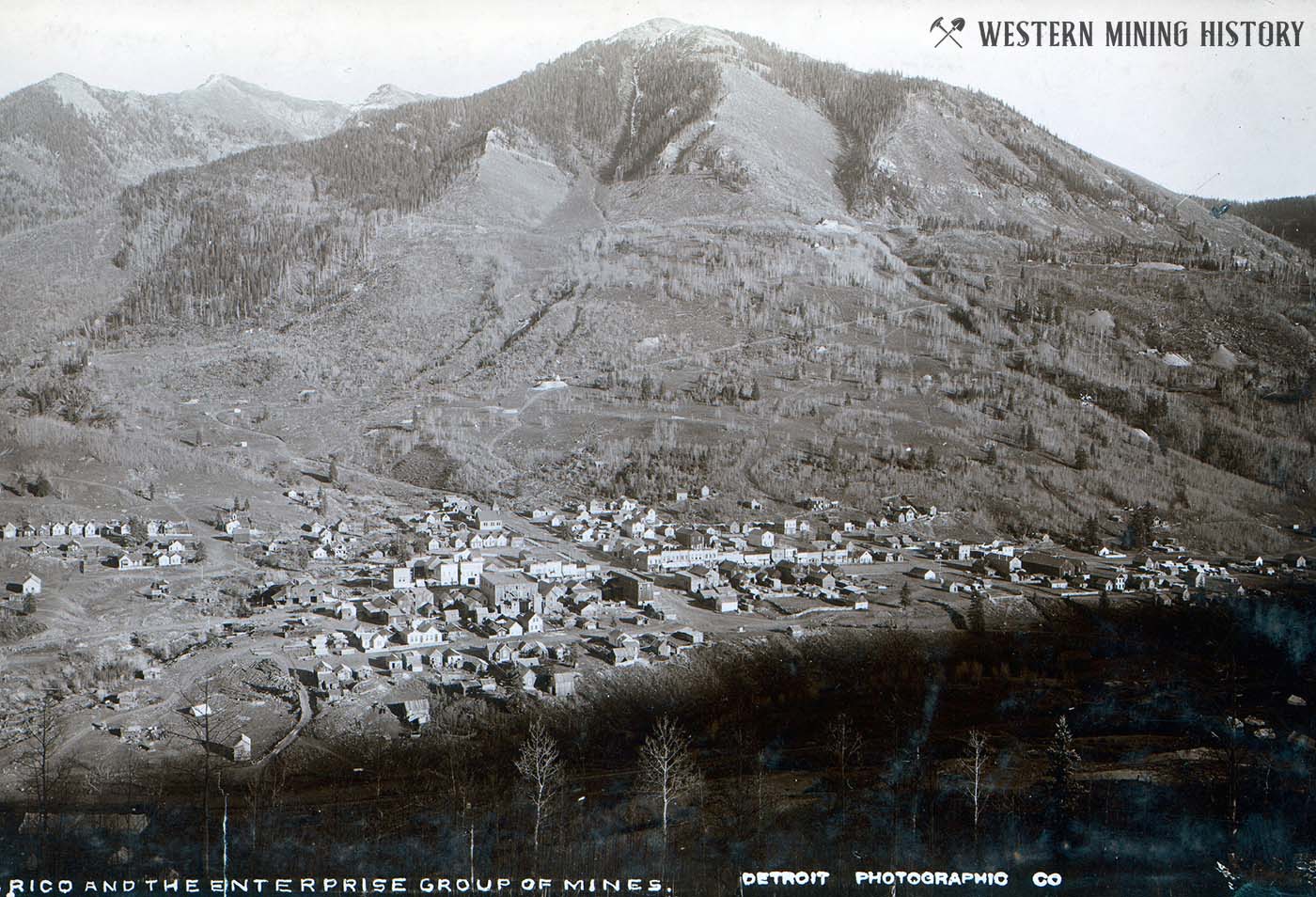
In the early 1870s the population of the area was only around 50 individuals as early prospecting indicated the area contained only low-grade ore. Settlement was also impeded as a result of a decline of Colorado’s mining industry after the panic of 1873, and the presence Ute Indians which lived in the surrounding mountains during the summer months.
In 1877, Washington James Buchanan, of Ouray, discovered carbonate ore in the area, but it was not until 1878 when he took a sample to Long, Stout & Munn’s sampling works in Ouray that anyone realized there were minerals of value waiting to be mined. Despite his failed attempts to return during the winter, he arrived again in March of 1879 and started working immediately. Once word got out, the rush began and from May to July the town saw the arrival of hundreds of new prospectors, miners, and businessmen.
A miner’s association was formed in July and a constitution, by-laws, rules & regulations were adopted by the camp at what became known as the Pioneer Mining District (the Pioneer was one of the first mines, established by Sheldon Shafer and Joseph Fearheiler in July of 1869).
The town took the name Rico, suggested to commemorate the Spanish history there and the richness of the mines. Other names in contention were Carbonate City, Carbonateville, Dolores City, Doloresville and Lead City.
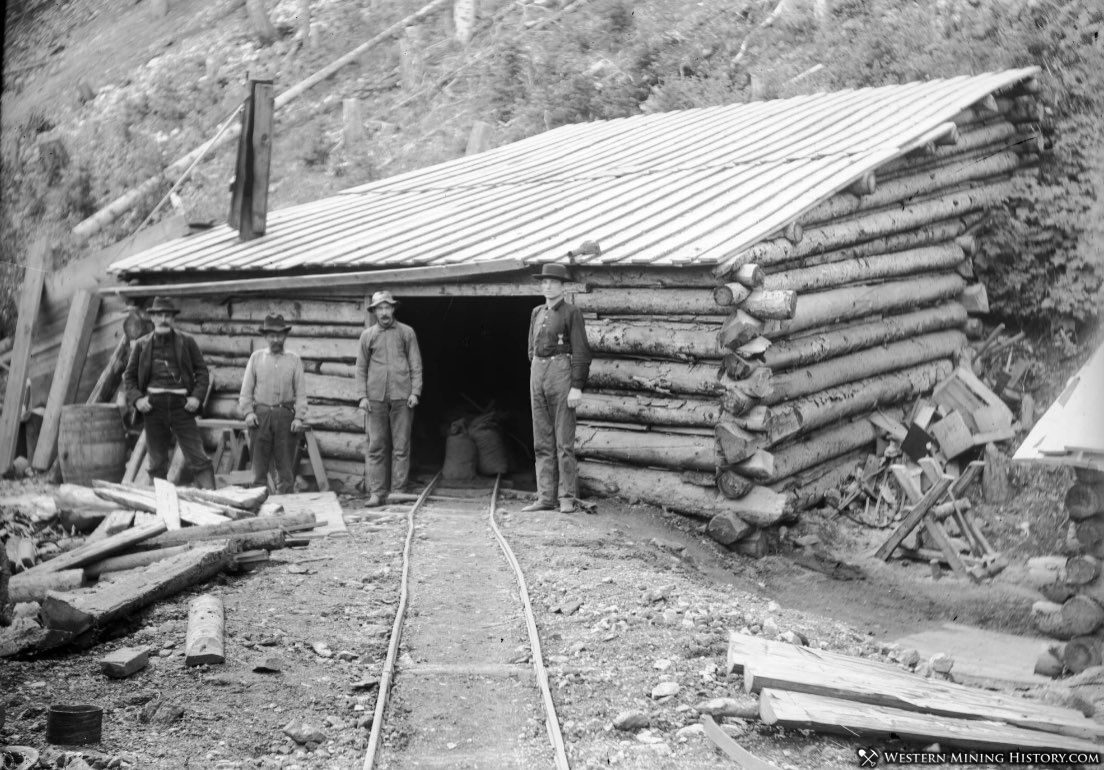
The town was surveyed, sub-divided, and laid out into streets, alleys, and numbered lots. Previously empty land was divided into 25x100ft parcels and prices rose from $5 to $5,000 within a year. By August, over 100 homes were completed with many more under construction, and hundreds of tents were scattered throughout area to the west of the town.
One early arrival at Rico was Senator John P. Jones who purchased mines for a rumored sum of $180,000 by August of 1879. Jones had his start mining in California in 1849 where he served as county sheriff before ascending to the California senate where he served from 1863 to 1867. After serving in the U.S. Senate for the state of Nevada in the 1870s, he found his way to Rico and immediately began investing in the mines, a sure sign to the public that the San Juan mining town was a good investment.
Capt. A. J. Johnson, one of Jones’ employees at the Grand View Mining Company, worked tirelessly to transport the first smelter from Alamosa to Rico in the spring of 1880.
Rico’s early development was hampered by the lack of access to the town from the regional transportation hubs and mining centers like Silverton, Animas City (now the northern part of Durango), Pagosa, Del Norte, and Parrott City (Mayday).
Fortunately the town’s promise drew the dedication of sawmill owner, J. McJunkin of Silverton, who became unwavering in his determination to move his 3,500 pound sawmill on a strong wagon with 6 pair of cattle from Silverton to Rico. He traveled south to Animas City then west to modern day Mancos, north to Bear Creek and the Dolores River. He proceeded north to town to convince the inhabitants to help him make a road to finish transporting the sawmill. A town meeting that night organized over 15 men to set out south to help the wagon, while others organized a party in town to start the road headed south to meet them.
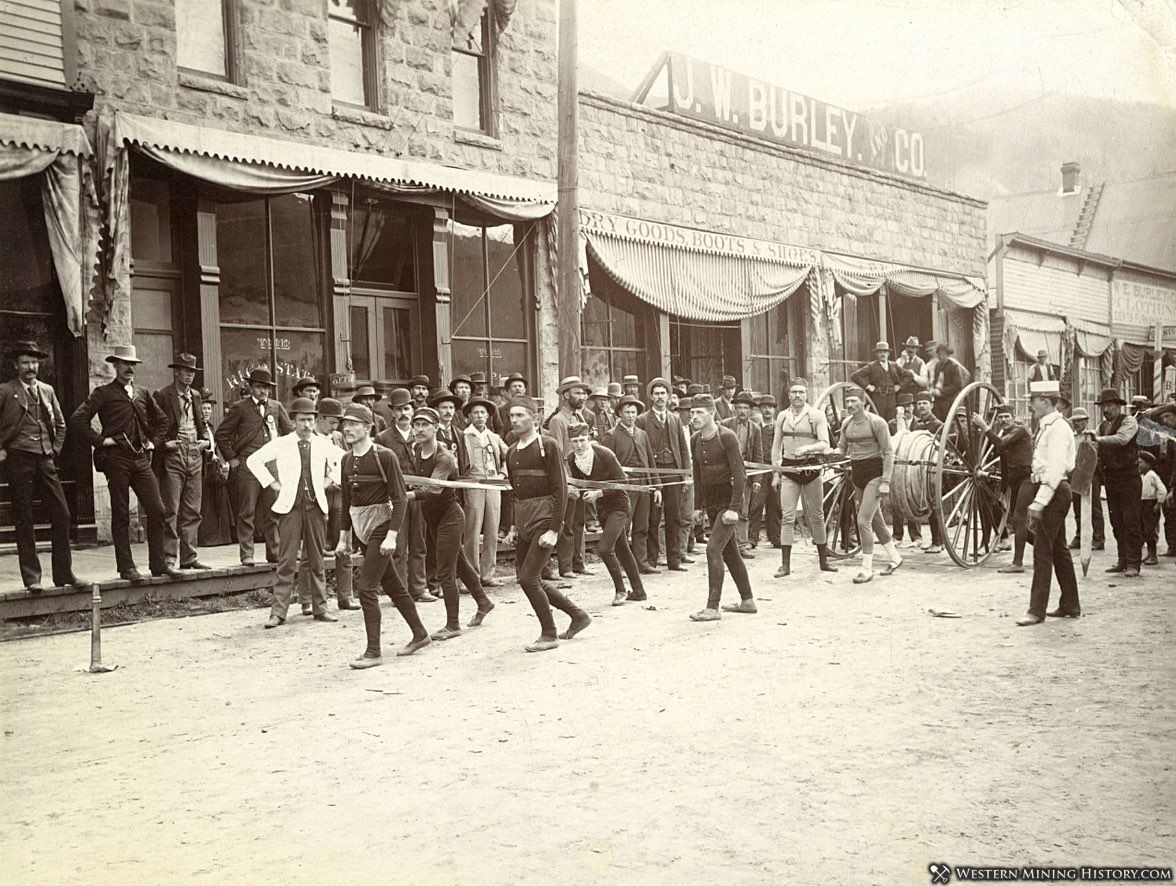
The first year of Rico’s incorporation saw the population grow to 2,000, and by April of 1880, there were numerous laws surrounding sanitation in the city, the proper care, storage, and processing of animals, a prohibition of admission to saloons for persons under 12, disturbing the peace, and how to handle firearms and disputes within the city.
Its elected officials, a mayor (F. W. Raymond), clerk (D. McGraw), recorder (C. A. Mantz, also the original editor of the Dolores News), and four trustees (H. E. Snyder, M. A. Bean, E. P. Kent, and M. C. Marston) served one-year terms, and a town marshal, police justice, physician, attorney, fire warden, surveyor, sexton, and assessor were appointed.
Dolores County was created by the division of Ouray County on February 10, 1881 and Rico was made the County Seat. The town's new status as center of county government further stimulated its growth and development.
In March 1881, a claim jumping incident at the Johnny Bull mine occurred west up Horse Creek. Armed men, sent in the middle of the night to contest the claim, were repelled by 68 armed defenders. After vacating the mine, reinforcements for the contesting party arrived and the valley was filled with 125 armed men, evenly divided. Despite high tensions over the mine rumored to produce ore valued at $22,000 a ton, no shots were fired, disaster was avoided, and only a few mentions of the incursion made it into local papers.
The population worked to open access to the surrounding areas, adding toll roads to the mines, and across Scotch Creek to the area we now call Purgatory Ski Resort. Mines dotted the landscape around Rico with a majority being located on the southwest section of Telescope Mountain. The area became known for its silver, gold, iron, copper, coal, manganese, zinc, bismuth, pyrite, and molybdenum deposits that seemed to promise an unending supply of minerals.
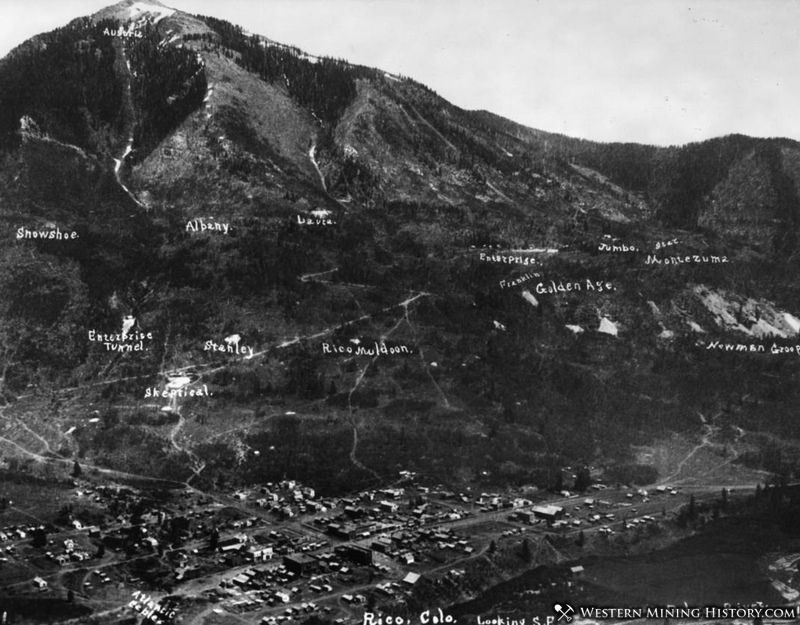
Harsh winters in 1883 and 1884 cut off access to Rico almost completely. Supplies were scarce in the valley, silver prices were declining, and by 1885 the population dwindled to around 400. Despite the push to improve the roads into the area in the years leading up to 1885, most believed the railroad would arrive before the wagon roads were completed. This blind faith set the city up for further disconnect and resulted in continued decline until 1887 when a new discovery on Enterprise Mountain gave new life to the community.
Electricity became available at Rico in March 1890, kicking off several years of prosperity. The Rio Grande Southern Railroad arrived in 1891 and passengers were housed by the 62-room Enterprise Hotel. The Blackhawk tram was installed in 1892, moving 80 tons of ore every 10 hours. The local population grew to over 4,000.
Like many districts in Colorado, the silver crash of 1893 hit Rico hard and the local mining industry declined. Rico was still the center of a relatively rich mining district, and the mining industry, although hobbled, soldiered on into the new century.
Rico in the New Century
By 1901 many of the Rico mines had been consolidated under the United Rico Mining Company. Production shifted primarily to lead and zinc, and around 1910 URMC became the Rico Mining Company, then the Syndicate Mining and Milling Company in 1915. As metals became important for World War I, base-metal ores were mined from Silver Creek and CHC Hill. Production slumped again after the war.
Easterner Robert L. Pellet arrived in 1919, consolidated a some of mines to form the Pelleyre Mining & Milling Company, which became a subsidiary of the International Smelting Company of Salt Lake City and was a major employer in the area until his death in 1949. Advances in metallurgy, specifically the perfecting the flotation process, helped mine operators like Pellets operate profitably.
A 250-ton custom mill was built in Rico by the International Smelting Company in 1926. Two years later the mill was shut down permanently and ore continued being shipped to Salt Lake City for processing as it had before the mill’s construction.
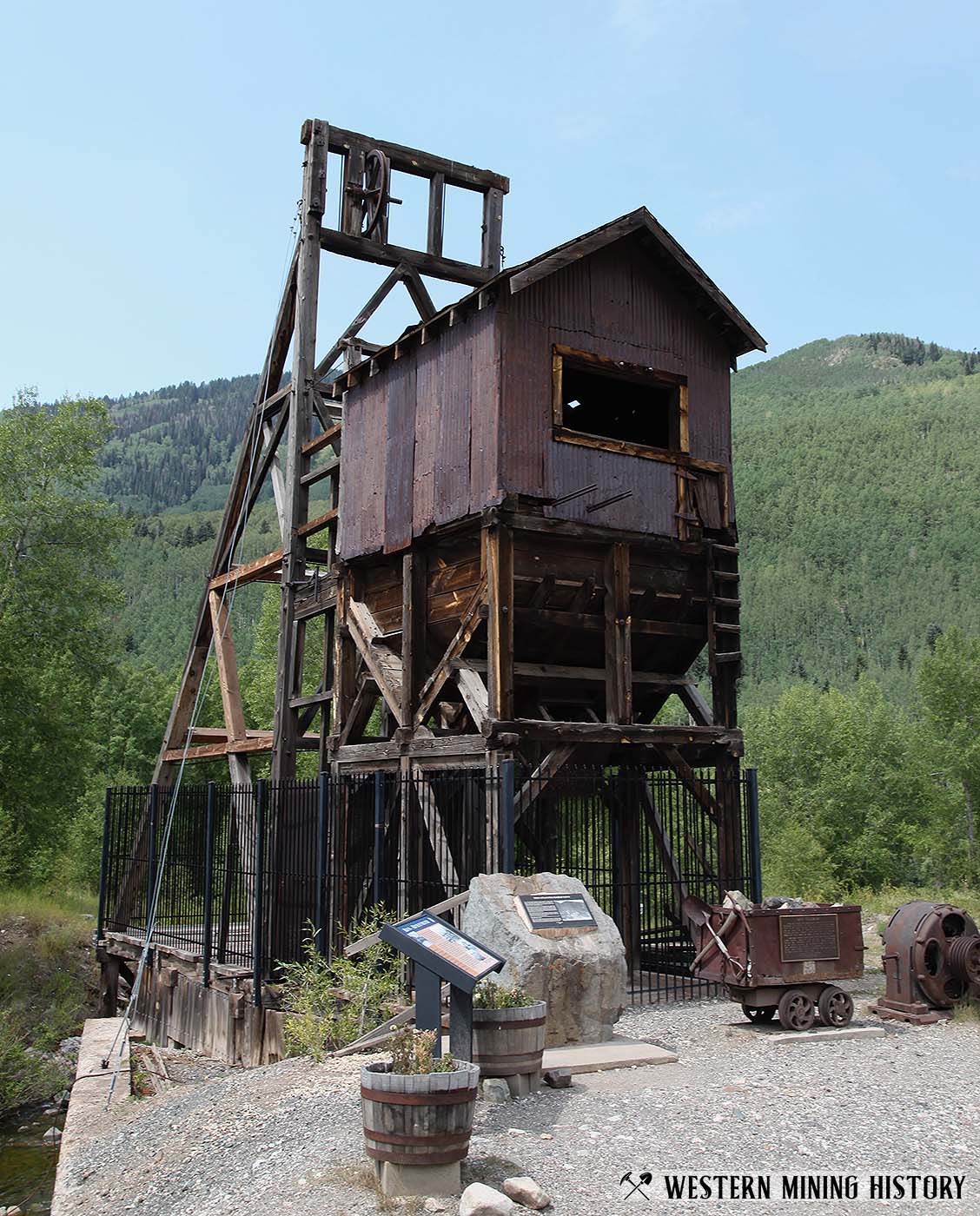
The 1929 Depression hit Rico hard, and by 1932, production had almost completely stopped. Small-scale mining resumed in 1934, and a 135-ton flotation mill was installed in September 1939. Elizabeth Pellet, wife of Robert Pellet, was paramount in keeping the mail and railroad service coming to town, and in the 1940s, she was elected to the Colorado House of Representatives on a platform to improve roads to Rico.
World War II reinvigorated the mining industry, and in September 1955, the Leonard-Monsanto contact plant was constructed to produce sulfuric acid from pyrite. The sulfuric acid they produced was sent to uranium mills in Naturita and Uravan, during a time when nuclear arms race between the U.S. and Russia resulted in a boom in the uranium mining industry.
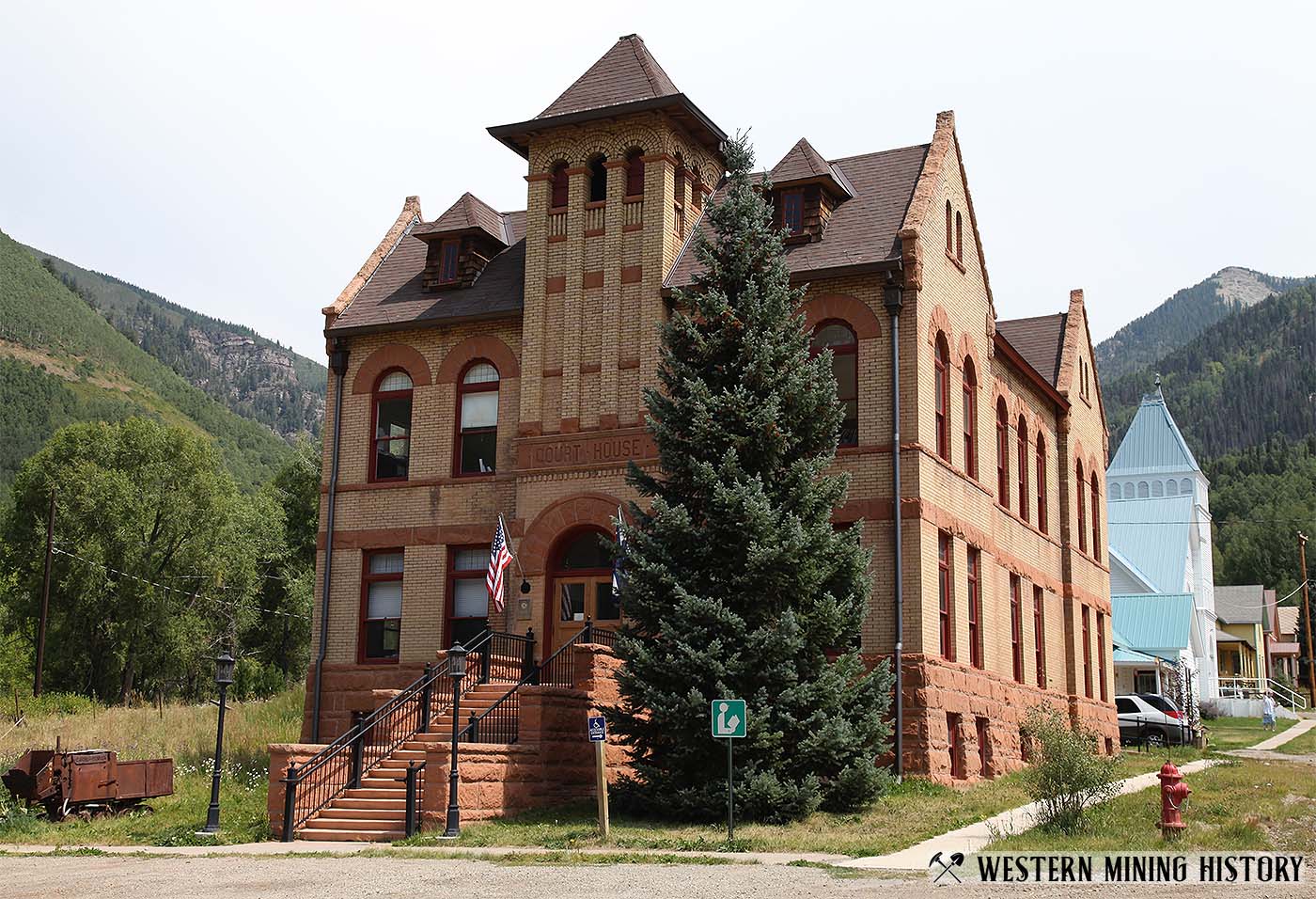
Rico Today
Rico's declining population and mining industry led to the relocation of the county seat to Dove Creek in 1946. The railroad that served the town was scrapped in the 1950s. Rico once again was faced with the isolation that hindered its development in the early years.
While nearby towns like Telluride, Ouray, and Silverton have thrived as tourist centers and resorts, Rico has continued to be a sleepy town of just a couple hundred residents.
After a century of mining, the residents of Rico started to shift away from the boom-and-bust economy that follows mining. The town began to evolve to house some of Telluride’s workers, southern state summer residents, and retirees.
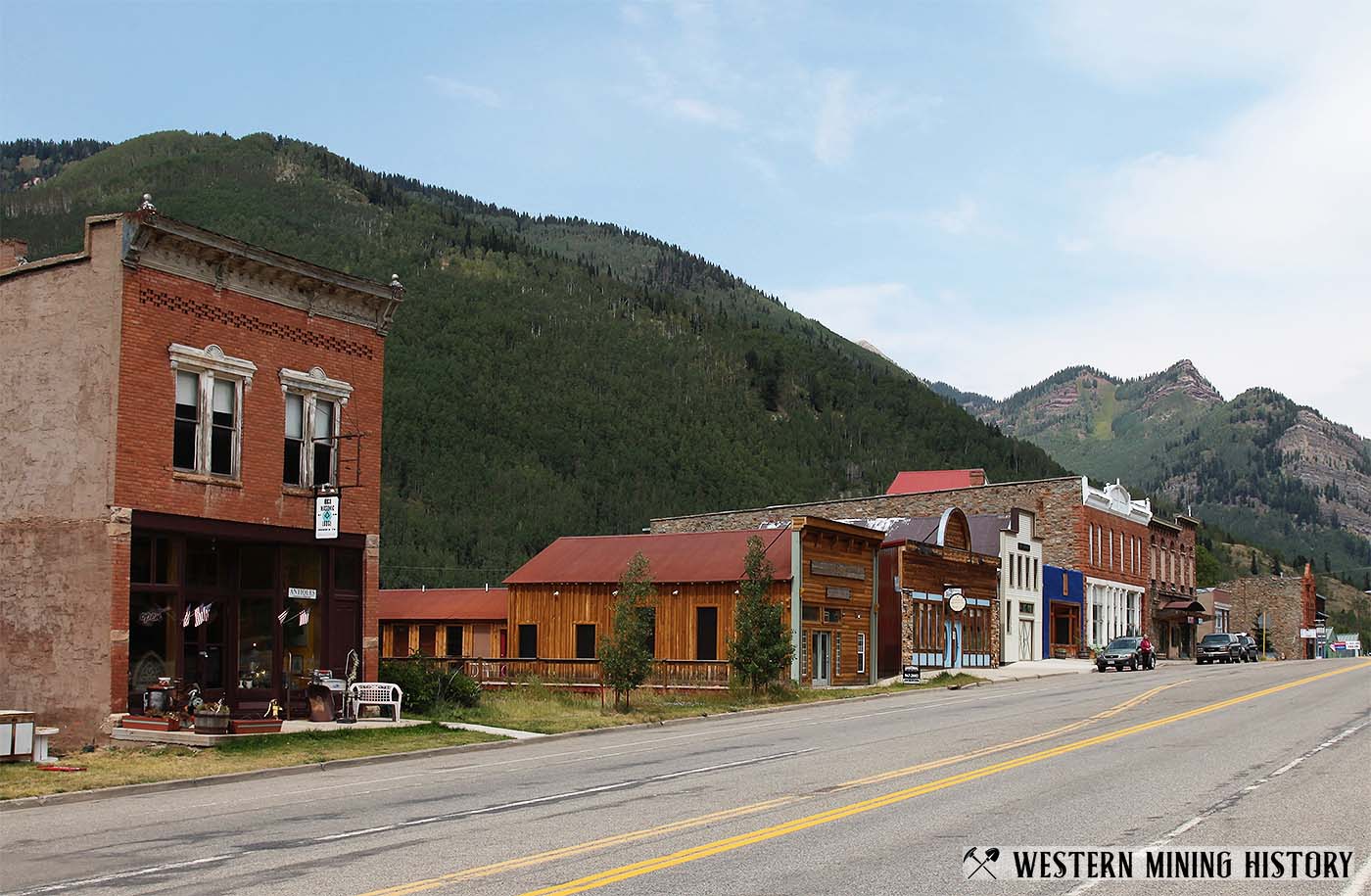
In 2019, the town voted against a central sewer project, ensuring that the city will not be able to grow beyond its current population of around 200 people. Today, attractions like mountain biking trails, dirt roads with access to old mines, and the small mining town feel manage to bring in a modest summer tourist trade.
A Tour of Colorado Mining Towns
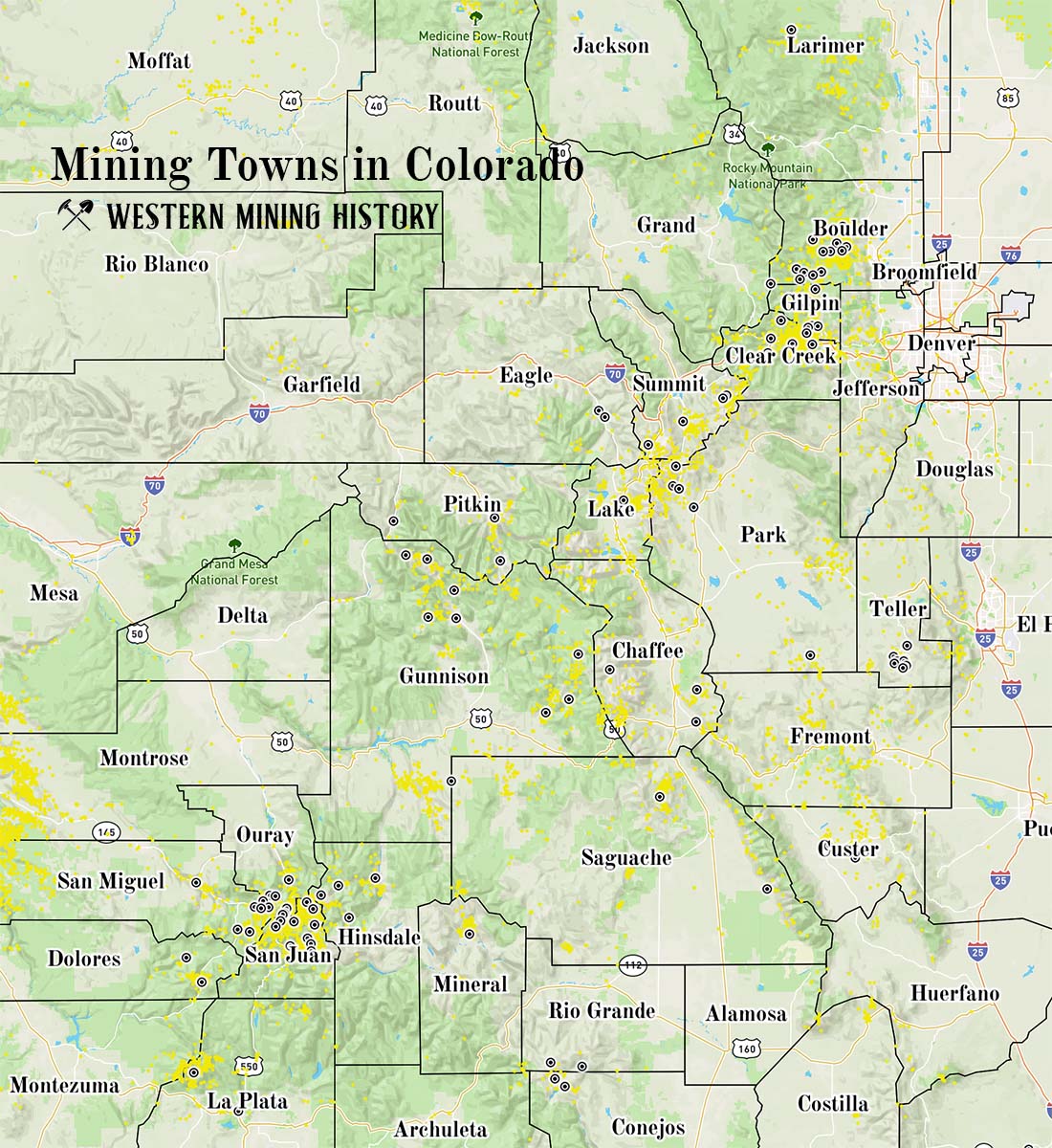
Explore over 100 Colorado mining towns: A tour of Colorado Mining Towns.
Colorado Mining Photos
More of Colorado's best historic mining photos: Incredible Photos of Colorado Mining Scenes.
